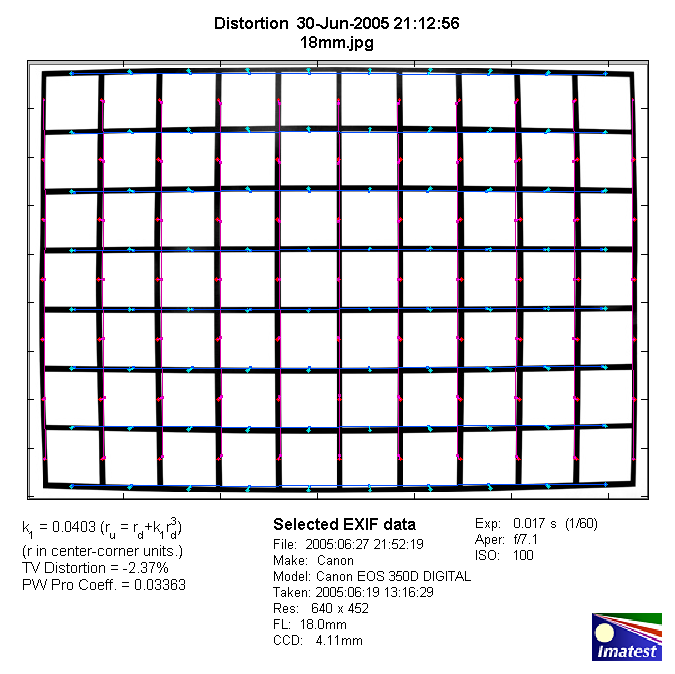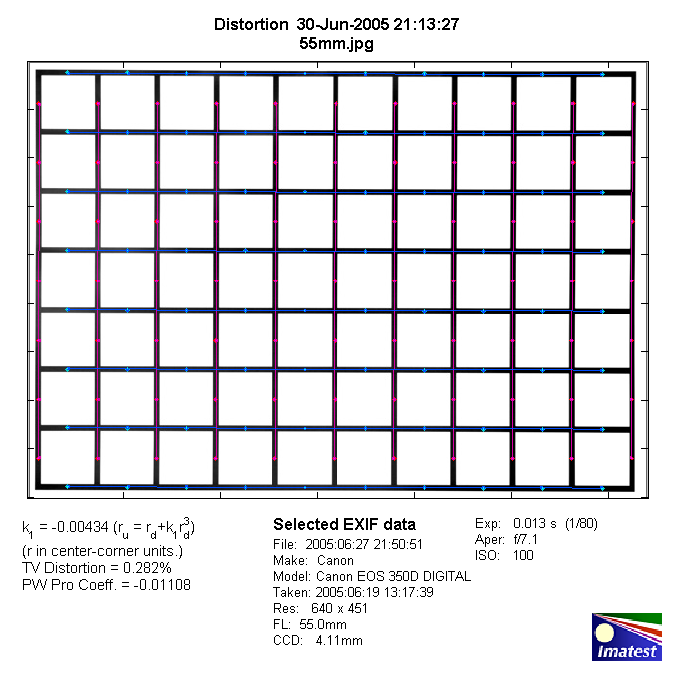|
Canon EF-S 18-55mm f/3.5-5.6 II - Review / Test Report - Analysis |
|
Lens Reviews -
Canon EOS (APS-C)
|
|
Page 2 of 3

Distortion
Typical for many standard zoom the lens shows very pronounced barrel distortion at the wide end.
At the long end there is virtually no distortion.
18mm:

55mm:

The chart above has a real-world size of about 120x80cm or 40x the focal length.
Expect more distortions towards closer focus distances.
Vignetting
The level of vignetting isn't really impressive - at least wide-open under lab conditions (infinity focus).
Vignetting is worst at 18mm, wide-open - no surprise here. At ~1.3EV is can be disturbing in some situations.
However, stopping down improves the problem down to an acceptable degree. At 35mm and 55mm vignetting
is a lesser problem with ~0.8EV at 35mm @ f/4.5 and ~0.7EV at 55mm @ f/5.6.

PS: updated due to data error.
MTF (resolution & chromatic aberrations)
The MTF performance was mixed in the lab. As to be expected the weakest spot are the borders
at 18mm @ f/3.5 which are plain ugly. Things improve a little at f/5.6 but you should really
stop down to at least f/8 for decent results. The center is much better with already very good
resolution figures at wide-open aperture.
At 35mm and 55mm the performance is generally good towards the corners and very good in the center
with little differences across the aperture range.
Please note that the MTF results are not directly comparable across the different systems!
Below is a simplified summary of the formal findings. The chart shows line widths per picture height (LW/PH) which can be taken as a measure for sharpness.
If you want to know more about the MTF50 figures you may check out the corresponding Imatest Explanations
Chromatic aberrations (color shadows) are most pronounced at large aperture settings where
they can be disturbing at times (with an average width 1.39 to 1.26 pixels towards the borders).
Stopping down just helps marginally. It is worth to mention that the CAs varied quite a bit
compared to the opposite side of the image (slightly better) which is a problem when
you try to correct the issue via a tool (which works pretty well normally).

|